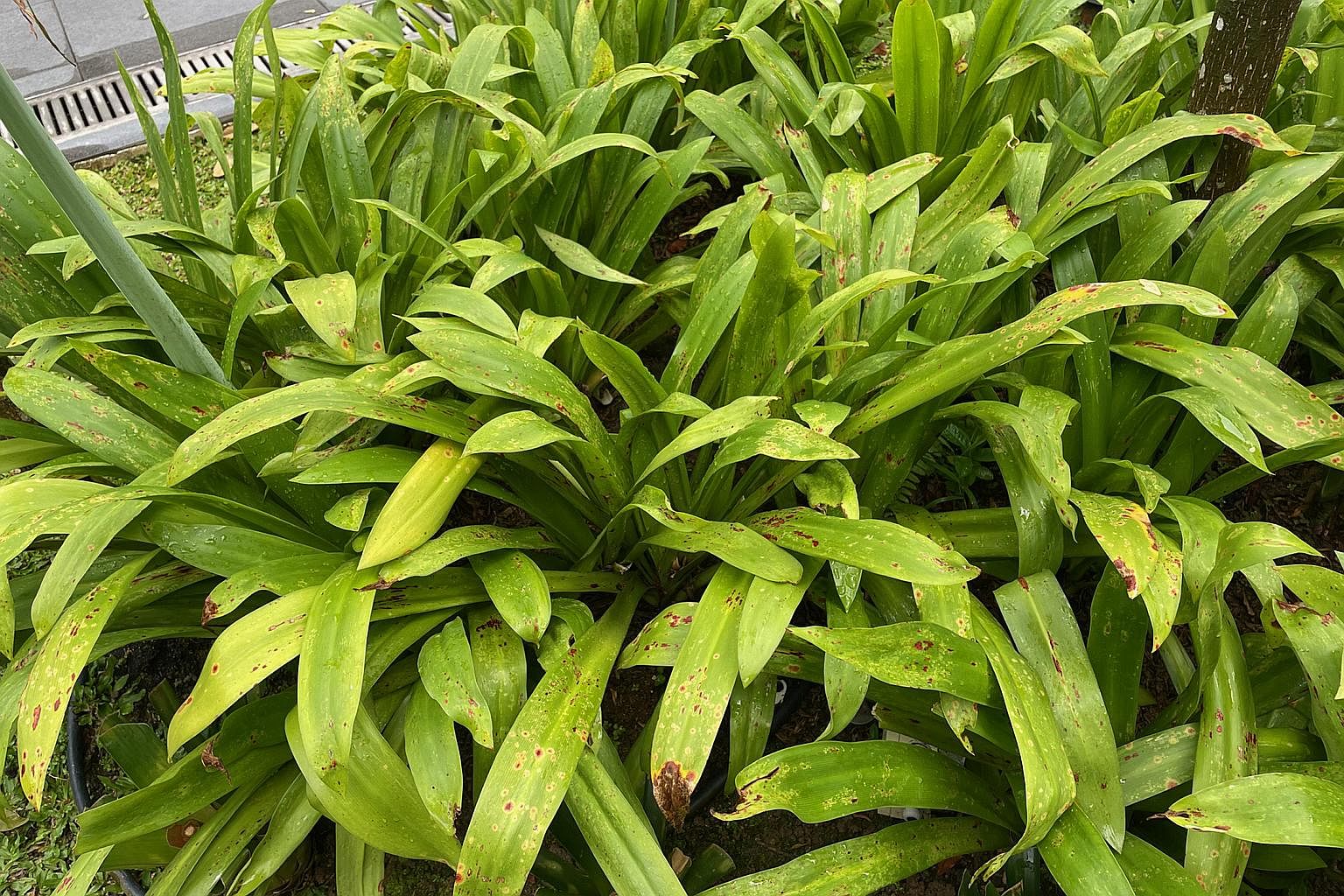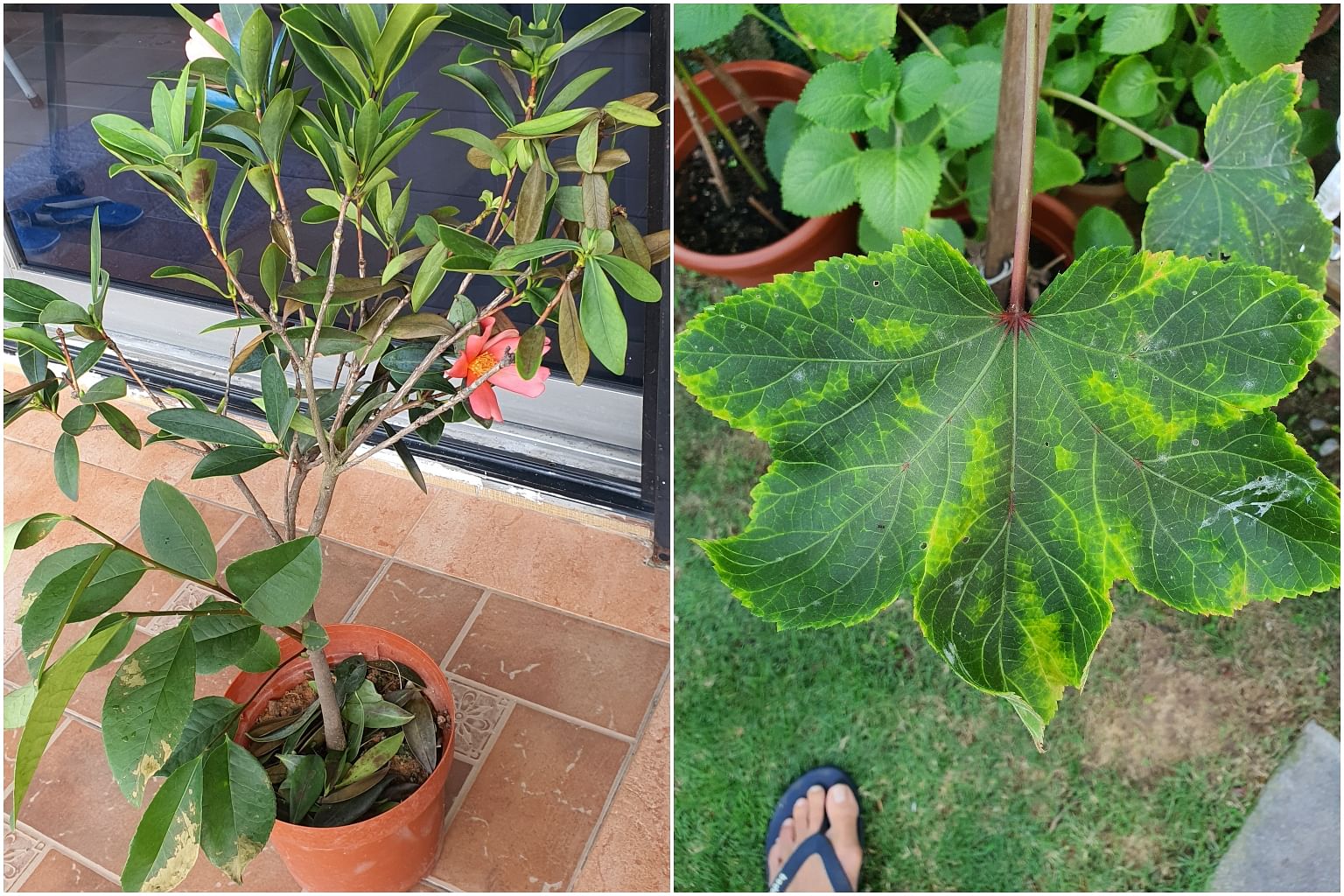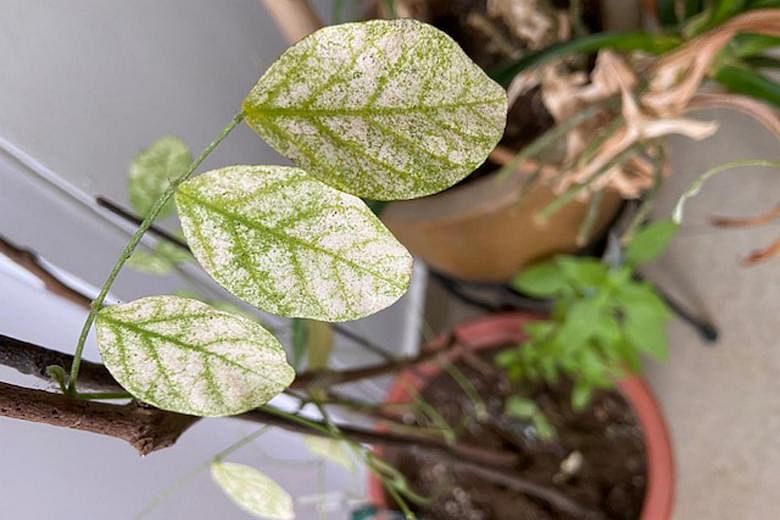Blue pea plant infested with spider mites
My wife recently started to grow blue pea plants. After a few months, the leaves turned white and the plant died. What is the cause?
Kenneth Koh
Your blue pea plant (Clitoria ternatea) has a serious case of a spider mite infestation, where the pests appear as small red dots that move slowly on the underside of leaves.
You can prune the heavily infested leaves and spray a dilute solution of sulphur soap, neem oil or summer oil during the cooler part of the day, to kill the adult mites. Repeated applications are required to keep the pest population under control.
When new growth occurs, you may want to consider spraying the foliage daily with water to wash off the mites and to keep the pest numbers low.
Ensure the plant receives sufficient sunlight for healthy growth. A windy and dry environment, allowing the plant to dry out or growing it in perpetually wet soil can make it more prone to spider-mite infestations.
Spider lily has fungal disease

This plant has been growing in my porch. Many leaves have turned yellow or brown. What plant is it and what is causing the discolouration?
Wang Yi Shi
Your spider lily (Hymenocallis speciosa) is likely to have been infected with a fungal disease. It appears and worsens in wet weather.
When leaves show first signs of infection, there is little you can do to save them. Some gardeners will prune the plant to the base and allow production of new leaves.
You can do preventive sprays using a fungicide such as those based on copper salts. These are available for sale in local nurseries. But avoid excessive use of copper-based fungicides as there will be a build-up of copper in the soil over time and this can be detrimental to plant growth.
Okra plant has viral disease
Please explain the presence of yellow edges on the leaves of my okra plant? Is it a sign of the plant being unhealthy?
Derrick Wong Ong Eu
Your okra plant (Abelmoschus esculentus), also known as lady's finger, is likely to have been infected with a virus. Note that viral diseases are not curable and are likely to have been spread by sucking insects such as leaf hoppers and whiteflies.
These pests are very common in okra plants and it is vital to keep their population in check to prevent plants from being infected with similar viral diseases.
Always examine plants for the first sign of such pests and take appropriate action by spraying them with pyrethrins, matrine or neem oil, which are environmentally less persistent and botanical pesticides available for sale in the gardening section of online shopping platforms.
Note that you should be rotating pesticides with different modes of action to prevent pests from developing pesticide resistance. Remove infected plants so the disease does not spread easily.

Camelia changii needs moist, well-drained soil
I bought this plant during Chinese New Year. I notice new shoots branching out of the main stem about a month ago. The leaves are different and much larger. The leaves of the main plant have started drying and dropping off. What is the cause and what should I do?
Katherine Lim
The plant is botanically known as Camellia changii. It is a camelia that flowers well in tropical Singapore.
The problem could be due to root issues. If the plant is allowed to dry out completely or grown in wet soil, its roots can become damaged. Once this happens, water uptake can be affected, which then causes the leaves to dry and drop. In severe cases, branches can die back.
It is not a shade-tolerate plant. If it is grown in a shaded location, moisture at the roots may not evaporate fast enough and roots can suffocate.
What you can do now is to carefully take the plant out from the pot to check the health of the roots.
Healthy roots appear white and fleshy. You can prune dead roots which appear black, dry or mushy.
Then pot the plant up and leave it in a bright but cool location to recuperate. If the plant survives, it will produce new leaves and you can gradually move it to a location with filtered sunlight.
• Answers by Dr Wilson Wong, an NParks- certified practising horticulturist, parks manager and ISA-certified arborist. He is the founder of Green Culture Singapore and an adjunct assistant professor (Food Science & Technology) at the National University of Singapore.
• Have a gardening query? E-mail it with clear, high- resolution pictures of at least 1MB, if any, and your full name to stlife@ sph.com.sg. We reserve the right to edit and reject questions.
Gardening talks with Dr Wilson Wong
Growing Mint Indoors Using Hydroponics
When: April 24, 2 to 2.45pm
Info: Register at the website
Gardening Q&A (April)
When: April 24, 3 to 3.45pm
Info: Register at the website

